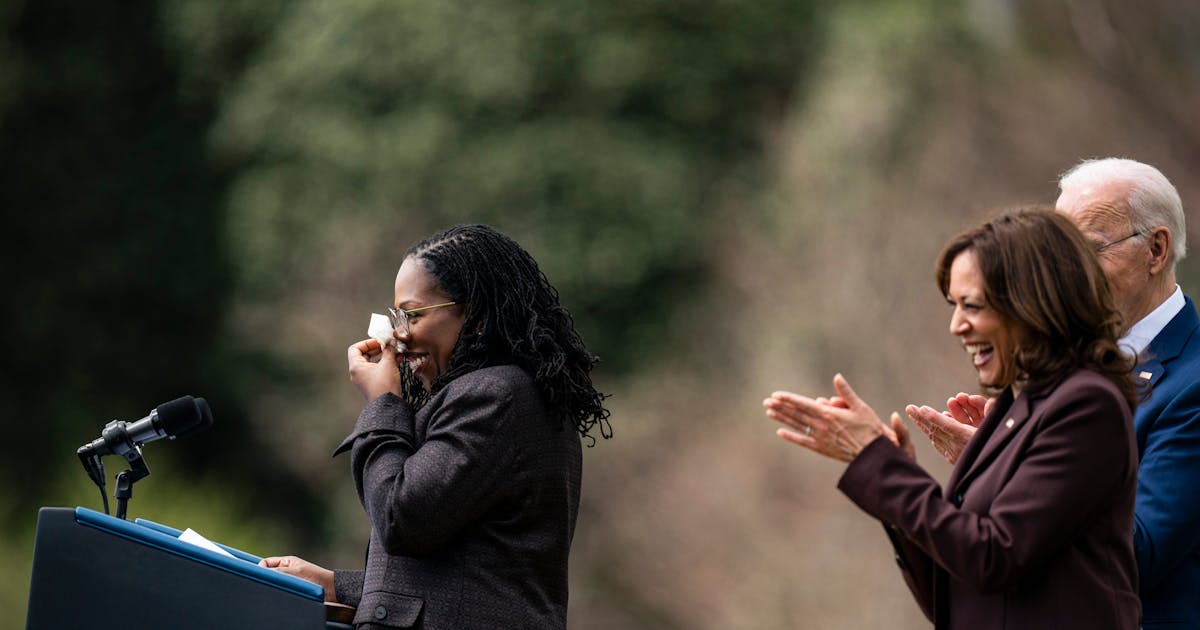
Opinion editor's note: Editorials represent the opinions of the Star Tribune Editorial Board, which operates independently from the newsroom.
•••
In a major but expected move, the U.S. Supreme Court has decided that race should no longer be considered a factor in higher education admissions. This week's ruling found that two top universities that considered race in student admissions violated the Constitution
"Many universities have for too long wrongly concluded that the touchstone of an individual's identity is not challenges bested, skills built, or lessons learned, but the color of their skin," Chief Justice John Roberts wrote in the 6-3 majority opinion, which prohibits college entry practices used at Harvard and the University of North Carolina. "This Nation's constitutional history does not tolerate that choice," Roberts concluded.
The watershed ruling came because of two lawsuits brought in 2014 by Students for Fair Admissions (SFFA), a nonprofit that argued practices at the colleges discriminated against Asian Americans by denying them spots that went to others with lower test scores.
It will take time to sort out what the ruling means for higher education. Yet it's clear that diverse student bodies are valuable in a nation that's becoming more diverse but is still plagued by inequality and by race-based discrimination in many areas, including health care, housing, policing and employment.
As Justice Ketanji Brown Jackson — one of the three dissenting justices — wrote in her dissent: Students for Fair Admissions "has maintained … that it is unfair for a college's admissions process to consider race as one factor in a holistic review of its applicants. This contention blinks both history and reality in ways too numerous to count. But the response is simple: Our country has never been colorblind.
"Given the lengthy history of state-sponsored race-based preferences in America, to say that anyone is now victimized if a college considers whether that legacy of discrimination has unequally advantaged its applicants fails to acknowledge the well-documented 'intergenerational transmission of inequality' that still plagues our citizenry."
The ruling marks a change that has been in the making since the high court's 1978 Bakke decision when justices declared affirmative action constitutional but invalidated the use of racial quotas. And in other decisions over the past two decades, the court has signaled that there should be a sunset on affirmative action policies. The court's conservative majority finally decided that the day had arrived — at least for higher education.
The American public has mixed views on the subject, according to a recent Pew Research survey. Pew reports that about half of U.S. adults say they disapprove of selective colleges and universities using race and ethnicity as factors for admissions decisions. About 33% approve, while 16% are not sure.
Those surveys also found dissonance within racial groups. For example, equal percentages of Hispanics (39%) approve and disapprove, with 20% undecided. And among Black Americans, 47% support considering race in admissions, while 29% disapprove and 24% are undecided.
Students for Fair Admissions argued that some Asian Americans were denied admission to Harvard because they were considered less likable, courageous, kind and respected, despite having high scores and good grades. That echoed the school's pattern of discrimination against Jews in the 1920s and '30s.
And in our view, colleges and universities that still rely on legacy admissions should examine how those practices restrict access to BIPOC students by continuing to give preference to white, wealthy students.
Admirably, many colleges and universities have adjusted their admissions criteria to maintain their commitment to racial diversity. Some use income, community service or leadership qualities as factors.
The University of Minnesota, for example, uses a holistic process that considers an applicant's grades, the rigor of their coursework, test scores and class rank, according to a Star Tribune news story. The U also considers "context factors," including whether a student has a particular outstanding talent or a background of "overcoming social, economic or physical barriers to complete their education."
About 40% of Minnesota's public high school graduates will be students of color by 2036, according to the nonprofit Midwestern Higher Education Compact. With growing enrollment challenges, it would be folly for colleges and universities not to ensure that their application processes are fair for all students.
As the Star Tribune Editorial Board has long argued, racial diversity matters in higher education. The nation's future depends on the best possible education for all Americans —regardless of racial or ethnic backgrounds.
"still" - Google News
July 01, 2023 at 05:30AM
https://ift.tt/sLFbcvP
Diversity is still critical in higher education - Star Tribune
"still" - Google News
https://ift.tt/Nz24yvF
https://ift.tt/EdhImaP
Bagikan Berita Ini














0 Response to "Diversity is still critical in higher education - Star Tribune"
Post a Comment